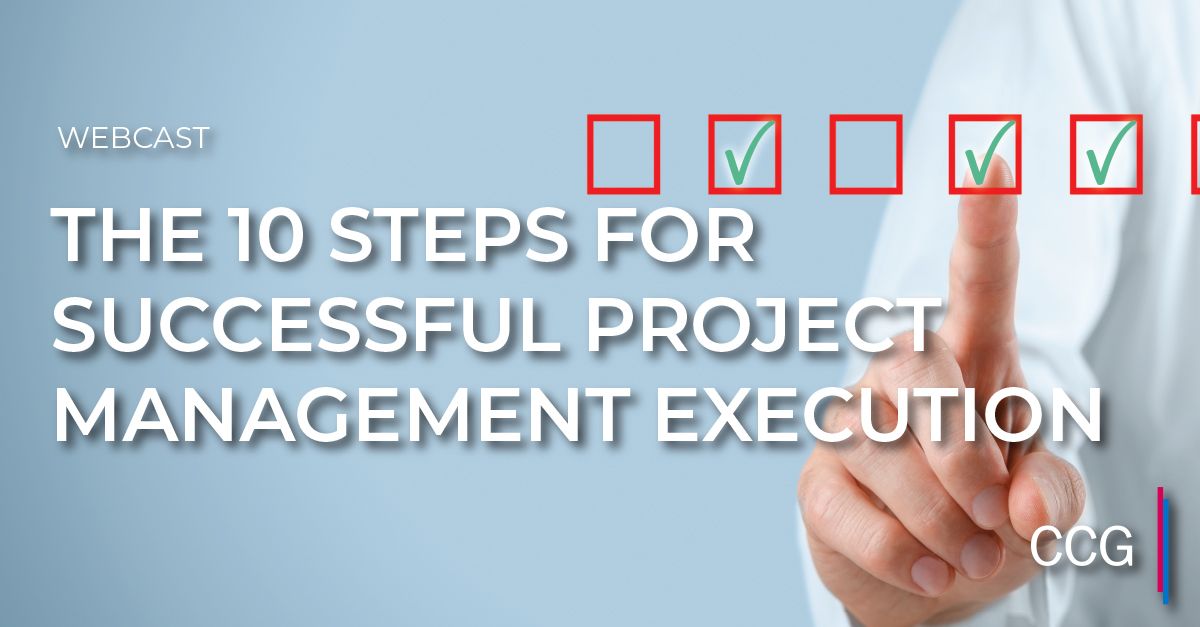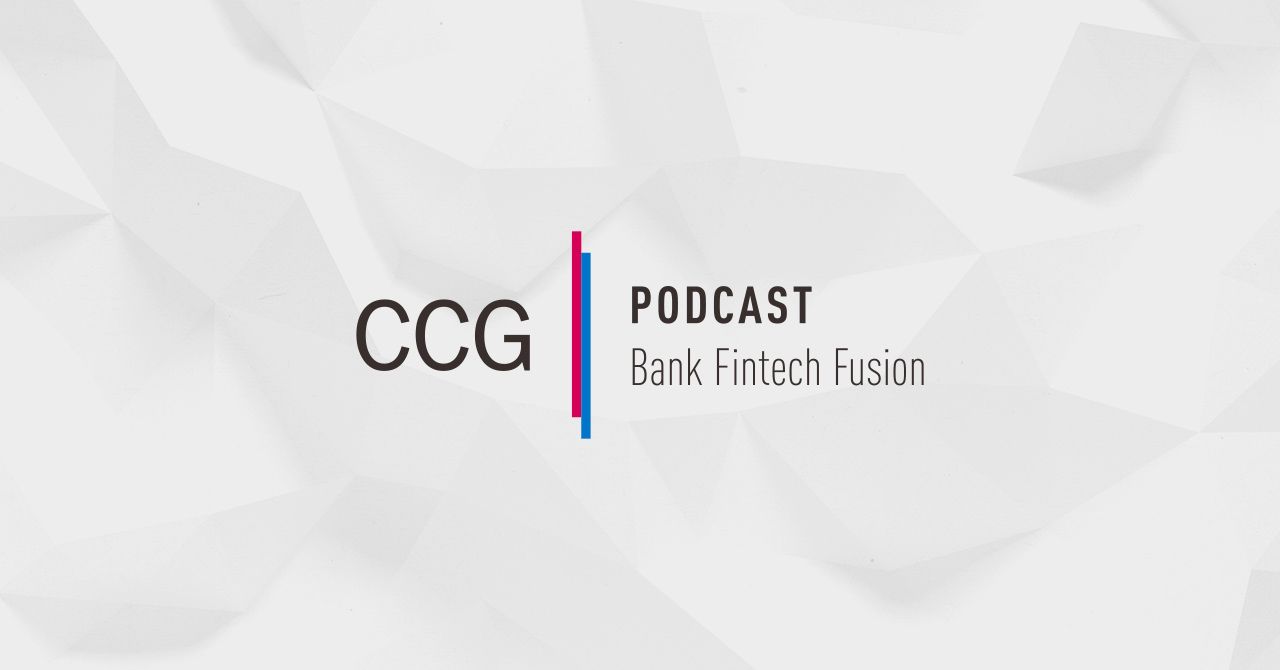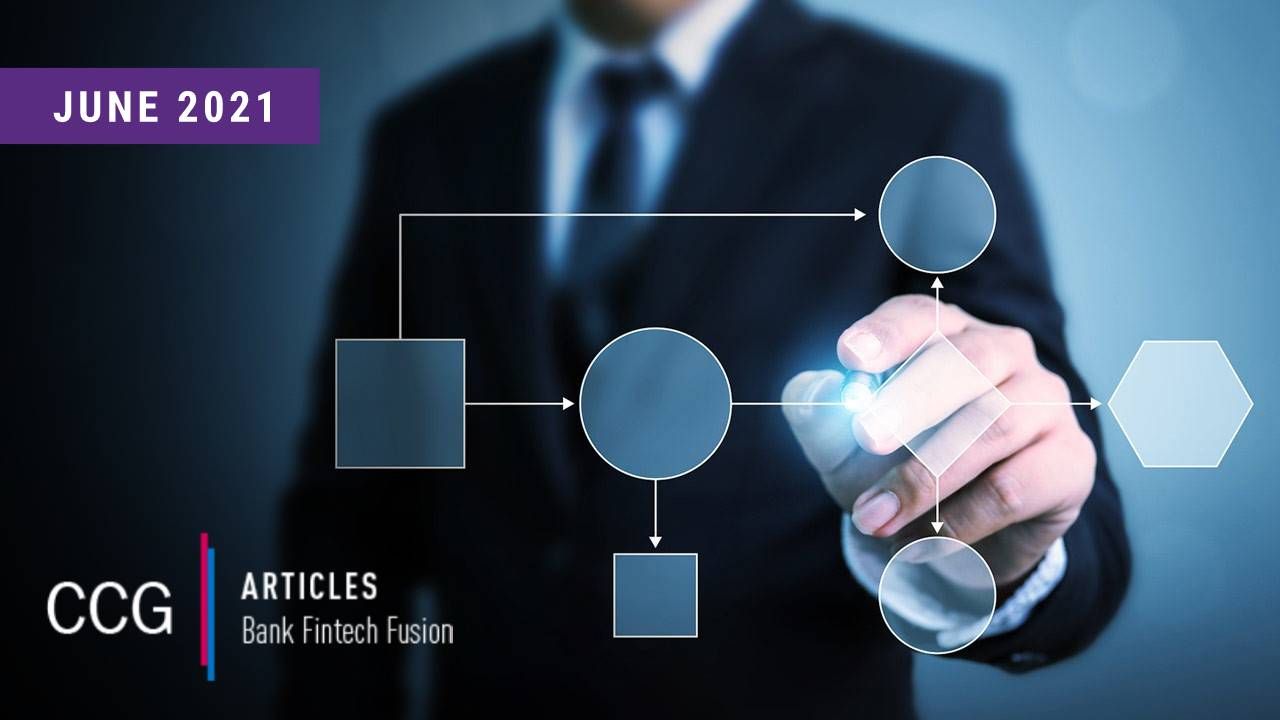The 10 Steps for Successful Project Management Execution
Available On Demand – 21 minutes
Project management is a crucial component for all financial institutions but many get wrapped up in the process and miss key opportunities that could save money and accelerate success. How are you managing and executing projects at your financial institution? Join the CCG team with host Scarlett Sieber as she sits down with CCG’s Chief Relationship Officer Pat Valentino to discuss project management and leave the session equipped with the 10 tips and tricks you can use moving forward.
Subscribe to CCG Insights.
[restrict]
Scarlett Sieber Welcome back to CCG Catalyst Webcast series, we are back with another week of great content, as always. I am your host, Scarlett Sieber, Managing Director, Chief Strategy Innovation Officer here at CCG. And this week I am joined by the incredible, intelligent Pat Valentino, whose Chief Relationship Officer here at CCG. Pat, lucky to have you back. Thanks for being here.
Pat Valentino Thank you, Scarlett.
Scarlett Sieber So this week, we’re goingbe talking about the ten steps for a successful project management execution, but before we go there, let’s get into a little bit of the housekeeping. Below our faces. You see another picture of Miss Pat and myself. You can go ahead and click on that. That will give you our full bios and backgrounds. You can connect with us on our social channels. E-mail us directly. If there’s anything that we say that sparks an idea or a thought or a question, you can actually go ahead and e-mail us directly from there. To the right, you see that CCG logo that is your go to resource for all things CCG. You will see our recent articles published on a variety of publications, our blogs on our website. And then anything else you want to know about what we do. Our strategies, our resources, they’re all there for you under that CCG logo. To the left is the Q&A button. That is your go to place throughout the duration of this webcast where you can ask us any questions that you may have. We will do our best to answer throughout the webcast. If not, have no fear. We’ll get back to by the end of the day. OK. So housekeeping’s out of the way. The other thing that I will say is, again, for our series, we really try to keep these short, concise to the point. We want to give you as much valuable information as a short amount of time as possible. We know you as banking and credit union execs have busy days. So want to let you get back to what it is that you’ve got to do and give you some great knowledge. OK. So, Pat, we’re going to be talking about project management. I mean, here at CCG and when you’re thinking about this topic, you know, we play a variety of roles for financial institutions, providing strategy, thought leadership assessments in many areas, vendor evaluations. But one of the things that we’ve really been known for across the industry is our tactical execution. And that really allows our clients vision to come to life. And so I thought it’d be important then you know, you thought when you’re kind of talking about this, what can we do? What type of value can we bring back to the ecosystem, to our clients and prosper around, you know, around project management? So if we thought to be helpful to have some tips and tricks. So with that, I think we should we should just get started. This is really about 10 steps for successful project management. Are there really 10 steps Pat? That seems like a lot. How does the size of the project impact the process? A project can mean so many different things. So how does that impact the process?
Pat Valentino Well, you’re right Scarlett. It is one of our great strengths in our tactical team. And of course, I’d, you know, drew on the tactical team to get a lot of this information to talk through. And there really are four really important characteristics that every project to be successful has to have. And they’re pretty simple. It needs to meet the defined business requirement. It needs to be delivered on time. And it needs to be on or over. Excuse me on or under budget. Sorry, not over. That would be a bad thing. And it needs to be delivered with the results that everybody was anticipating. So in this case, it’s not really size that matters, but really the planning, the definition and the governance that matter around the project.
Scarlett Sieber So on the planning portion of it, and I think that’s a key component, what do financial institutions need to consider before they start a new project? What are some of those things that they need to be thinking about from a planning perspective?
Pat Valentino Well, it’s pretty interesting. I think they need to do a self analysis, which I don’t think. I think that we believe sometimes we’re doing that, but we’re really not digging in deep enough. Right. You need as an organization to determine whether you possess the current expertise on your staff to get this project done. And then also look at all the other projects that are going on to make sure it’s not competing with that, expertise that you already have to get the project done. These people usually have day jobs and you’re asking them to do projects on top of that. Those two things can conflict a lot on the resource. And then it’s being realistic to determine if you need to go outside to a third party or you need to go find resources somewhere else to get the project done. A lot of time we’re trying to save money. And so we think, oh, we can’t invest in other resources to get this done. We need to use our own resources. And then what happens is nothing really gets done because the researchers are trying to do two things and they’re double tasks. So really, it is doing that self-assessment. What are we trying to do? Do we have the people to do it? And if not, can we get some help in doing it?
Scarlett Sieber Yeah, and I think there’s, that sounds simple enough, but I think the reality we know and you’ve seen this, too, is that you go in with the best intentions, even if you do kind of build out a plan. I loved your suggestion really about doing a self analysis. But oftentimes financial institutions and not only financial institutions, but definitely they will end up over budget. The project will take longer than expected. Why can’t as a banking executive, I could just build out a project management team and everything will be fine. Like why can’t we just build that out and move from there?
Pat Valentino Well, the project management team and the whole project management process is really key to success to any project. But they can’t go anywhere without, you know, the roadmap to where they’re going. So understanding the requirements of the project. Defining the time that’s available for the project. Providing, you know, internal team time and resources to execute. So I’m on the project and I’m the project manager if more of my resources aren’t being allowed the time to work on it, I can’t get anything done. And I think a key that we forget in our busy process of running our organizations and trying to do projects is the constant communication within the project and within the stakeholders and the key executives about the project is vital because the project doesn’t get defined and then move along seamlessly to the end. Right. It’s always moving. So a project management team is only as good as the direction and the planning and the timing and the process and the resource that you have available to them.
Scarlett Sieber You know, it makes total sense, and I think one of the points there, too, and you made a bit of an allusion to this earlier about potentially having external or outside help. There is even if you have people who are dedicated to this, like you said, A, they need direction and depending on what that project is, I mean, there’s different levels. Right. But something like moving to a new core as an example is certainly not a small project. And having an outside party who is an expert in that specific core could really actually help you think of it as another cost center. But really could help to accelerate that process. You’re actually going to save money because the timing could be quicker. The implementation could be quicker. You could be aware of pitfalls that if you are an expert in project management, that’s great. But that doesn’t mean you’re an expert on that core or an expert on whatever that project is. So it makes a lot of sense there. So you talked a bit about requirements. What you know, if you were to think and you would be talking to a big executive and some of our you know, our colleagues do this often, what are the requirements of a project?
Pat Valentino Yeah. So we bring up an interesting point by using the core example I’ll move to a digital channel example. So in today’s COVID pandemic world, with branches and teller transactions shifting, many of our organizations are looking at digital evaluations and requirements for a project related to their digital channels. You need to start the project with defining the requirements with the entire breadth and scope and the ultimate outcome of the project. What are you trying to do? Are you trying to improve the use of the digital channel or are you trying to improve the availability? Are you trying to prove some of the functionality? What is your ultimate outcome? Where are you going? What’s your goal? And at a minimum, when you’re defining and looking at these projects, you need to define the minimum for success. Because a lot of times we find projects getting built for Nirvana. Well, let me load everything into the project. Let me find as many things as I’m trying to solve as possible. And when you do that, those projects tend to get overburdened. And then as you’re in the project, you’ve got to start reducing what you have to do. And if you haven’t agreed with all of your stakeholders and your project members about the project in the beginning and what it needs to be successful at a minimum and what your goal is, you’re not going to get the buy in from all the people in the organization that you need the buy in to make it successful. So you’re going to have an us versus them? Well, I wanted this part of the project, but it was thrown out. So I’m not going to engage in the project anymore because my piece to the project was not considered important. So making sure you define it a minimum in your requirements. What you need to be successful. Making sure you don’t pile on a lot of additional objectives. Because then, you know, you end up not being able to do them all. It’s painful for the team members when they get them lost and get them pulled. And you’ve got a project that as you start to build the plan, if you can succeed with the minimum number of objectives, then you can redo the plan, adding in a little more and adding in a little more to ultimately getting to a final plan that you’ve all agreed on, that you truly believe you can meet your objectives and everybody’s got a share of the stake. So that’s really important in defining the requirements and also helps you identify those objectives where you want to be able to back things off if you have to be able to say this is a different you know, we hit a different path, let’s pull this objective off. But everybody knows that’s one that can be pulled off. So it lets the project keep on track. Lastly, I think we forget projects have both technical and business requirements. And if they’re ambiguous and they’re not agreed upon in the beginning of the project, then again, you don’t have realistic expectations, estimates or schedules because we haven’t looked at both sides of that equation. So in requirements, it’s important to look at both the technical, the business and make sure you got minimum objectives that you can then add on to if you need to.
Scarlett Sieber Well, I think that’s really great advice because it’s easy to get caught up, especially for those that are on the more operational side to say, start thinking about every single thing that could be impacted and how we want to make sure all of these aspects are included. But really, starting with the foundation of the necessary and then adding the other layers, it’s like baking a cake. It’s like, hey, we may want to put some flowers, we may want to put some stars, but right now we just want to make sure the cake’s good.
Pat Valentino You know, we’ve got to get the basics.
Scarlett Sieber Exactly. So, you know, when in your experience, when you really talking with our team, what are some of the key reasons that projects typically fail?
Pat Valentino Well, yeah, it’s interesting. I mean, we all know the easy ones, right? It was incomplete or vaguely defined. There were changes in requirements midstream. There wasn’t a technological competence to really understand the technology that was being presented or rolled into the project. There weren’t enough resources or the right resources. We didn’t have the right expectation. Our objectives weren’t really clear to everybody. Our timeframes were unrealistic. We want to change our core within three months. Right. We didn’t test things. You know, we’re also seeing things that are a little more nuanced. We can do this all by ourselves. We can go it alone. We don’t need any help. Great. You might not, but you might take longer because you’ve got a steeper learning curve rather than bringing someone in. Or an objective, you know, you’re in your project and you say, OK, let’s not worry about that. We’ll fix it later. We’ll fix it later. So you don’t even get the minimum done. You push it off to the side. One thing we see a lot of is abdicating to the vendor, right? Yes. The vendor and the organization, the financial institution have to have a very close role. But the vendor is not your organization, and it needs to be set up with your objectives and how you want to get that project done, because they might have a very different direction than you do. And then your objectives get lost. So becoming really familiar with your vendor about what you need to get done versus what the vendor wants you to get done. And so, again, that kind of push and pull. Sometimes we are almost end up believing that what we want is a financial institution, maybe isn’t the right thing. And we should just do what the vendor told us because 900 other clients do it right. So we got to stay focused on what’s our objective so it doesn’t end up being a vendor project versus a financial institution project. Not getting enough of the stakeholders and the users to have input. As a project team, we might think we know, but we are not the end user or the stakeholder or the person we’ve set the expectation and the goal out for. And lastly, kind of a big one, executive involvement and support. Right. Your executive sponsor has to have the same passion for the project. You do. So those are kind of the you know, the more nuanced failures we see that are coming to light more often.
Scarlett Sieber Yes, there was a lot there are so many great tidbits of information because, you know, the first of you talked about like, yeah, I’ve definitely experienced all of those and those are pretty well known. But the overreliance on the vendor, you think that people are like oh, well, of course, you know, we’re a client of said vendor, so we’re going to have to maintain a reasonable distance. But in reality, you get very close to these people. You’re talking them all the time. And I could even see to a little bit of, oh, well, 900 other banks or credit unions have done this. So you almost get sucked into thinking, OK, well, of course that’s the right way then. But just because that’s what everyone else is doing. You want to differentiate. So you shouldn’t be sucked into the idea that you have to do what everyone else is doing. And it’s pretty easy and you have to think ulterior motive for them. Of course, if it’s a much more direct plug and play, they’re going to encourage you to do the same. So that is super helpful. We’re running out of time. So let me get in one last question. The idea here was getting 10 steps or 10 things to remember as it relates to project management. You are so good at so many big ideas here. So what do you what do you have for us Pat? If we could just say10 things, ideas, things to remember, what would that be?
Pat Valentino Boil the ocean Scarlett. That’s it you need me to do. I got to boil the ocean. OK. So if I had to do 10, I would say first build a clear, well-defined and agreed upon set of objectives for the project and define what success looks like. Make sure you know what the end goal looks like. Assign an executive sponsor who shares that passion. You need someone on the executive team who’s going to rally for you when you get obstacles, gain both executive and management agreement on the resources. And I mean people, time, and money for the project. Because those are the three things you need and you can do anything with people, time, and money. Determine if you have the resources. If you don’t know, find them. Be realistic on your resources. Have regular and committed meetings on the project and include stakeholders and sponsors in that meeting. Make everybody participate and be involved in the meeting and keep minutes and notes, because that helps you go back and say, wait a minute. We talked about this three months ago. Let’s not bring that back up. We have that one solved. Let’s move on. Build very concise, consistent work plans that give you milestones, so you know when you’re off track or you’ve got some early warning that you need to shift the project a little bit. Have simplified reporting. Nobody wants to read 99 pages of project graphs and little gant charts to figure out what’s going on. Red, yellow, green. Key elements, make it simple. Everybody can kind of get onboard on that. One of the kind of the under looked areas that people forget. Testing. Test early. Test often. Keep testing because you got to try and find every nuance you’re going to have in this project to figure out where it might go off track. And lastly, it’s kind of my favorite, which is every bump is not a red alert, ditch the project. You’re going to hit walls in every single project. Learning how to get around those walls, over, up, through, change. You know that’s part of good project management. It’s part of good leadership and strategy. Figure out how to get around the problem. Those are the 10.
Scarlett Sieber Those are good. There is a lot there. You know, one of the things that was coming to mind, as you were mentioning those was this kind of persistent theme that we’ve actually had throughout a variety of our webcasts around the importance of having executive sponsorship and leadership, not necessarily actively engaged in, but at least consistently aware of and advocating on behalf of these initiatives, whatever we’re talking about, building a digital strategy or innovation, your partnership strategy. And even to this, it’s like you have to make sure that at the executive level are involved in the conversations and aware of because that could be a make or break of success or not. So that’s certainly fascinating. Well, Miss Valentino. Here we go. Thank you so much for all of that great information. I think I was just in my head thinking about the number of tweetable moments we could take from that because there was so much. Appreciate your time, as always, and thanks to our extended team as well for their input and insights into this. They live and breathe this stuff all day, every day. So they tell me. That is awesome.
Pat Valentino They are the experts.
Scarlett Sieber They are. Awesome. Well, thank you all for joining whether you are watching this live or on demand. We really appreciate you participating. If we did not get to your questions throughout this conversation, we will get back to you by the end of the day. If you have other things you want to add, anything you disagree with, other questions, you know where to find us. We want to be here for you as that resource. If you are thinking about and about to undertake a big project yourself, please, don’t hesitate to reach out and have an introductory conversation with us. We can help you think through that and whether or not it makes sense to bring us on. We don’t know, and neither will you until we have that conversation. If you’re looking at assessments or your digital strategy, please reach out to us. We would like to be here for you as a resource. And until next week when we have our next episode, have a lovely rest of your day. And thank you from the CCG Catalyst team.
Pat Valentino Thank you.
[/restrict]
Is It Finally Time for Open Banking’s Debut in America?
Digital Dreams – Expanding Commercial Banking Capabilities
Over the COVID Horizon, Mobile Banking Demands Strategic Clarity

Chief Strategy & Innovation Officer Scarlett Sieber is one of the world’s premier voices in financial services. She is among the industry’s most sought-after speakers as a thought leader and innovator with expertise in driving organizational change at both startups and enterprises across the financial services and fintech ecosystem. Scarlett has been invited to speak at over 100 prestigious financial services and technology conferences globally, including Money20/20, Finovate, South Summit, and NASA’s Cross Industry Innovation Summit.
Scarlett’s experience includes founding her own startup as well as working at banks such as BBVA, USAA, and Opus Bank. She is a leading fintech influencer, included on lists such as Top 100 Women in Fintech 2019 and Top 10 Fintech Influencers in the U.S. Scarlett also has deep experience in digital strategy and innovation implementation, making her a key asset to building cutting-edge programs for our clients.
 Pat Valentino is a Principal & Chief Relationship Officer and brings over 30 years of financial services and technology experience in financial services ranging from multinational, community to credit unions. Specialties include strategic planning, technology systems, evaluations, contracts, omni-channel, digital experience and regulatory compliance.
Pat Valentino is a Principal & Chief Relationship Officer and brings over 30 years of financial services and technology experience in financial services ranging from multinational, community to credit unions. Specialties include strategic planning, technology systems, evaluations, contracts, omni-channel, digital experience and regulatory compliance.
Pat has truly done it all in financial services, a banker, an examiner and successful executive in a Fortune 500 company.






